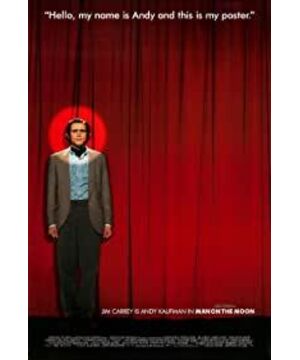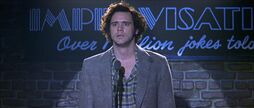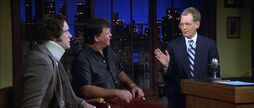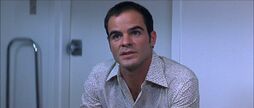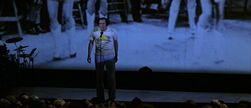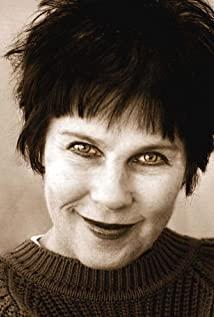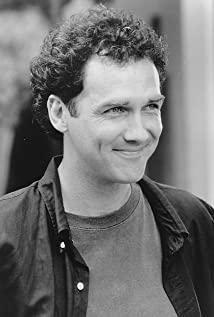Audiovisual language This is a biopic with a sense of play and absurdity. With stylized audio-visual, combined with grotesque performance techniques and narrative angles, it leads the audience to walk back and forth in the two emotions of sorrow and joy, intertwined between dreams and reality, ingeniously showing the short-lived but short-lived comedian Andy Kaufman The legendary life makes people feel like they have experienced a grand and tricky carnival, full of impact. The protagonist Andy appeared in a black-and-white, grainy and textured picture, and he was nervously pointing at the camera incomprehensibly. While cleverly breaking the fourth wall, it also issued an invitation letter to the audience to participate in this carnival, creating a weird and repressive atmosphere invisibly. When the audience was confused, he repeatedly flicked the record player with the node of the background music, and the list of subtitles in the video moved up and down with his actions. This stylized processing greatly reduced the distance between the audience and Andy. It also enhances the interest of the film. After nearly 15 seconds of black field, Andy's reappearance greatly satisfied the audience's sense of surprise. The picture also changed from black and white to color. Under the small frame composition of the projector's angle of view, this scene was announced. The carnival officially begins. In this crazy dream woven by Andy himself, he is first and foremost the commanding leader, always ahead of the audience in the film. Whether it is to trick the audience on the stage with the crude and manic "villain" Tony, or plan a farce with the Hercules boxer to arouse the audience's anger, he is like a bystander who has nothing to do with him, controlling and admiring the audience's expectations. Among the reactions. In the scene of wrestling in the boxing ring, Andy’s opponents’ faces are blurred one after another, naturally advancing the time span. The rude and primitive fighting action under the high-density editing point is matched with the elegant and brisk soundtrack. The position gradually rises, and finally freezes in the overhead shot, creating a strong sense of contrast and absurdity. The use of this kind of experimental montage makes the organic series of multiple dramatic plots, through the reproduction of similar scenes, the repetition of lines, and the natural transitions, all of which are impressive. Andy is unreasonable and sober. He sits high and high on the distant moon, and the spotlight hits him like moonlight. There are many shootings on the stage. Andy is the main subject. The stage uses a dark curtain to highlight his existence. It is also his disguise and mask. It is him. An insurmountable natural barrier with the audience. The camera shot back and forth between him and the audience at high frequencies. The background sound is the natural sound of the scene. The voice of the record player’s old English accent mixed with the audience. The dissatisfied scolding pushed the absurdity of this clip to the top, and at the same time created a high-level and chewy texture. Such a sharp reaction The contrast is even more ironic. He can pretend to be Ratka, Elvis, or even Tony disguised as a violent temper. But no one really understands what the real Andy looks like. Undoubtedly, he is lonely and incomprehensible. In the second half of the film, the tone changes from joy to tragedy. The curtain of comedy and mischief is torn off mercilessly, and the absurdity and sadness underneath are displayed in front of the audience. When Andy was diagnosed with cancer while lying on the hospital bed, as his subjective perspective changed, there was only a close-up of the doctor's hand movements, and no doctor's face appeared during the whole process. The camera is gradually advancing. The so-called redemption is just self-deception. The next scene is a close-up of Andy's expression-a crying and laughing, extremely complicated expression. When the surrounding scenes turn, he only shows his head, and he is covered in red. Surrounded by the sheets, a frame symmetrical composition is formed. At this time, Andy's mind is at a glance. It turned out that he was just a participant and victim of a carnival dream, and at this moment, he really fell from the moon and lived in other people's pranks. The film formed a closed loop at the end and the beginning, with fanaticism and sadness, dreams and reality, in the form of a mischievous carnival, showing the relatively real Andy Kaufman to the audience. This is what the audience really gains.
View more about Man on the Moon reviews


